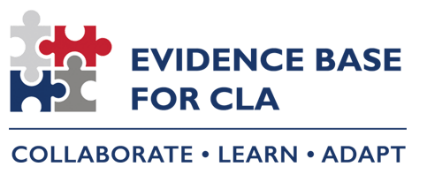Podcast: Meeting Strategically: How to Collaborate, But Not Too Much (Inside Out Episode 3)
In previous RBP Updates, we have examined how collaborating, learning, and adapting (CLA) can help translate a results-based orientation into practice through iterative reflection, learning, and relationship-building. The USAID Learning Lab is taking the conversation on CLA further with a new podcast series — From the Inside Out: Achieving Better Development Outcomes through Collaborating, Learning, and Adapting. This series is designed to empower staff and partners with evidence, resources, and tips to help practitioners incorporate collaborative learning and adaptation practices into their work.
This podcast episode focuses on what effective collaboration looks like. While collaboration yields many benefits desirable outputs for problem-solving, including “surfacing the things we don’t know”, bringing different perspectives and capacities to bear, and fostering trust which can live beyond a particular project or initiative, the podcast also highlighted some pitfalls to ‘over-collaboration’. Individuals who are the best connected in an organization tend to be the most frequently consulted by other individuals and teams, leading to collaboration fatigue. To avoid burnout, the podcast highlighted several important considerations to make collaboration as light and as meaningful as possible:
- Distinguish between the types of collaborative resources, what we are asking from our colleagues and individuals we are consulting, and what form collaboration takes (moving us beyond meetings). Resources like the RACI matrix may be useful in helping us articulate responsibilities and time commitments.
- Placing decision-making at lower levels can both empower staff and avoid collaboration fatigue.
- Robust and fruitful collaboration should not be assumed; it takes work and significant investments in time and relationship-building. Collaboration can take multiple forms, be it joint ownership, partnership, coordination, convening, consultation, and information exchange – so it is worth considering expectations and roles of those we are collaborating with from the outset.
For the complete podcast, see here, and for more on strategic collaboration, see here.
